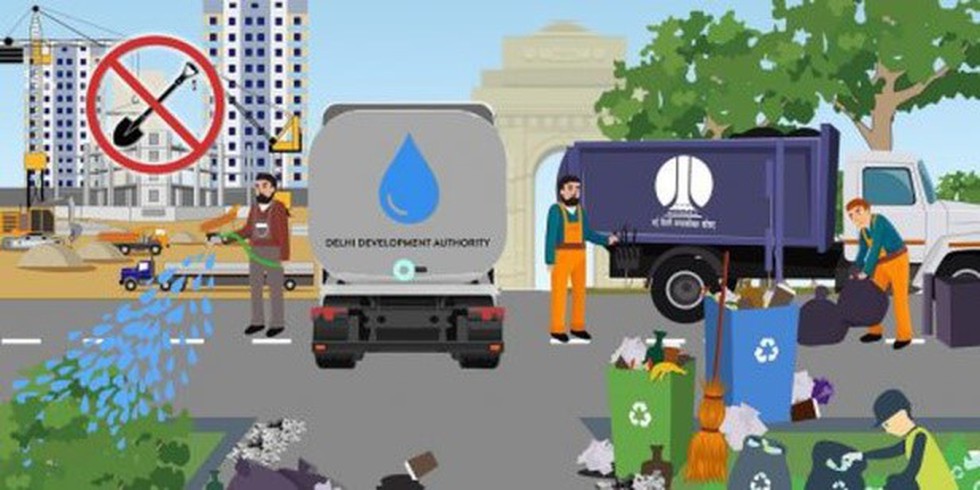
About Graded Response Action Plan:
- It is a set of emergency measures that kick in to prevent further deterioration of air quality once it reaches a certain threshold in the Delhi-NCR region.
- The GRAP was first notified in January 2017 by the Ministry of Environment, Forest and Climate Change.
- Implementation:
- The Commission for Air Quality Management (CAQM) has constituted a sub-committee for the operationalization of the GRAP.
- This body includes officials from the CAQM, member secretaries of pollution control boards of Uttar Pradesh, Delhi, Haryana, Rajasthan, the Central Pollution Control Board, a scientist from the IMD and one from the IITM and Health Advisor.
- The sub-committee is required to meet frequently to issue orders to invoke the GRAP.
- The orders and directions of the CAQM will prevail in case of any conflict between directions issued by the State governments and the CAQM.
What are the revised measures?
- Stage I – ‘Poor’ Air Quality (AQI ranging between 201-300): Enforce NGT / Hon’ble SC’s order on over aged diesel / petrol vehicles.
- Stage II - 'Very Poor' (AQI 301-400): Rigorous actions to combat air pollution at identified hotspots in the region.
- Stage III - 'Severe' (AQI 401-450): Impose strict restrictions on BS III petrol and BS IV diesel four-wheelers in certain areas and may suspend physical classes in schools for primary grade children up to Class 5.
- Stage IV - 'Severe Plus' (AQI greater than 450) : When the AQI exceeds 450, four-wheelers registered outside Delhi, except for electric vehicles, CNG vehicles, and BS-VI diesel vehicles, will not be allowed to enter the city.
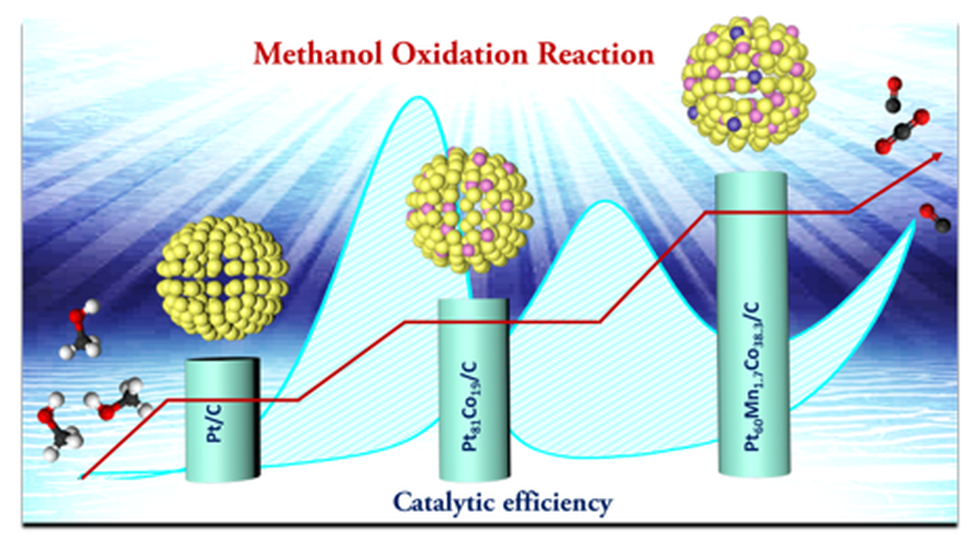
Key findings:
- Researchers have synthesized a trimetallic PtMnCo catalyst that displayed superior catalytic activity and high CO tolerance when compared to commercially available catalyst.
- The choice of Manganese (Mn) as a dopant was based on its abundance and affordability and the multiple oxidation states it offers making it a good candidate for electro-catalysis.
- Significance of DMFC
- Among the different classes of fuel cells proposed, DMFCs have long been considered an attractive alternate power source for small vehicles such as forklifts and as battery chargers for mobile phones, digital cameras, laptops, and other small electronic gadgets.
- It has high energy density, high efficiency, and low operating temperature.
- They are also much safer to operate because they deal with liquid fuel (methanol).
- The methanol oxidation reaction (MOR) at the anode and oxygen reduction reaction (ORR) at the cathode are the main processes that determine the performance of DMFCs.
- Platinum is the most often used MOR catalyst. However, fundamental challenges such as slow kinetics, high manufacturing costs (due mostly to the pricey Pt-based catalyst), and CO poisoning of the Pt catalyst make commercialization of DMFCs challenging.
- Therefore, the search for an alternative Pt-based catalyst that circumvents the above issues is one of the most pressing research problems with respect to DMFCs.
- Alloying Pt with other transition metals such as (Ru, Co, Ni, and Fe) is thought to be a useful strategy for improving the catalytic performance and durability of Pt catalyst along with reducing the amount of Pt being used in the catalyst.
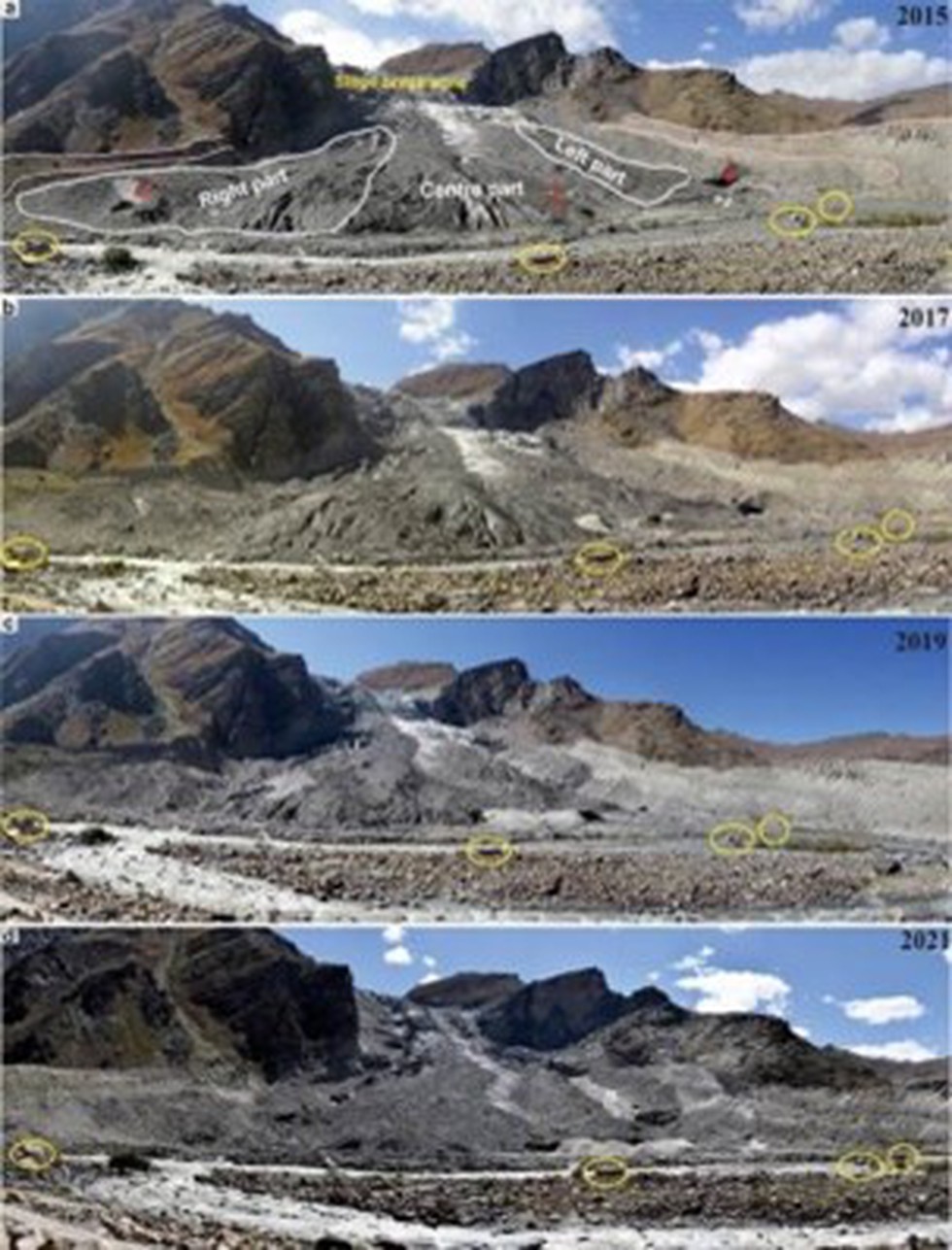
About Parkachik Glacier:
- The Parkachik glacier is one of the largest glaciers in the Suru River valley, covering an area of 53 square km and is 14 km long.
- The Suru River valley is a part of the southern Zanskar Ranges in the western Himalayas.
- There are two main reasons for the rapid melting of the glacier.
- The first is global warming and increasing temperatures in the region.
- The second is that it is at a lower altitude than other glaciers in the Zanskar region.
Key facts about Zanskar Ranges
- Zanskar is a high altitude semi-desert lying on the Northern flank of the Great Himalayan Range.
- This mountain range acts as a climatic barrier protecting Ladakh and Zanskar from most of the monsoon, resulting in a pleasantly warm and dry climate in the summer.
- Flora: Much of Zanskar's vegetation is found in the lower reaches of the valleys, and consists of alpine and tundra species.
- Fauna: Among the wildlife that can be found in Zanskar are the marmot, bear, wolf, snow leopard, kiang, bharal, alpine Ibex, wild sheep and goats, and the lammergeier.
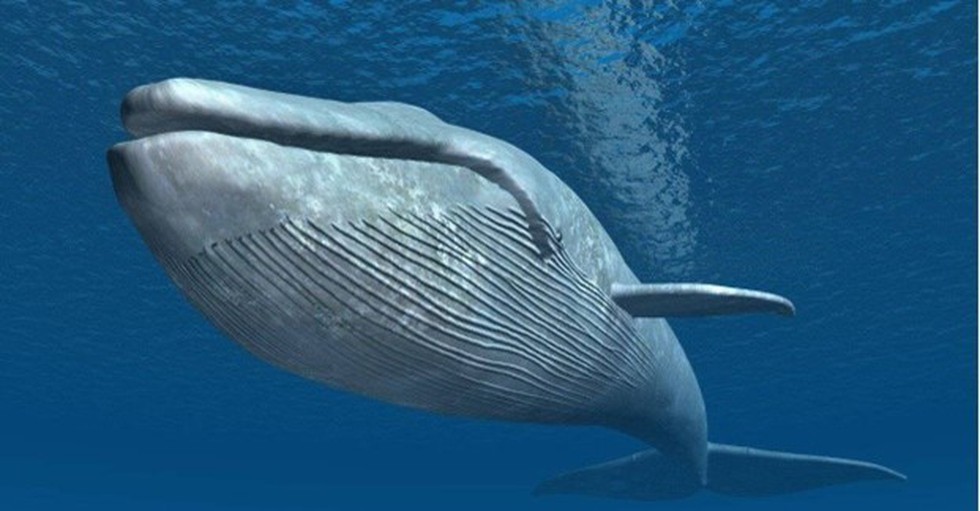
About Blue whale:
- Blue whales are the largest animals ever to live on our planet.
- Whales are at the top of the food chain and have an important role in the overall health of the marine environment.
- Habitat: They are found in all oceans except the Arctic Ocean.
- They generally migrate seasonally between summer feeding grounds and winter breeding grounds
- Lifespan: The average lifespan is estimated at around 80 to 90 years. Scientists can estimate the age of whales by counting the layers of wax-like earplugs collected from deceased animals.
- Behaviour and Diet
- They sometimes swim in small groups but are more often found alone or in pairs.
- They generally spend summers feeding in polar waters and undertake lengthy migrations towards the equatorial waters as winter arrives.
- The primary diet whale is krill—tiny shrimp-like animals, but fish and copepods (tiny crustaceans) may occasionally be part of the blue whale’s diet.
- Conservation Status
- IUCN: Endangered
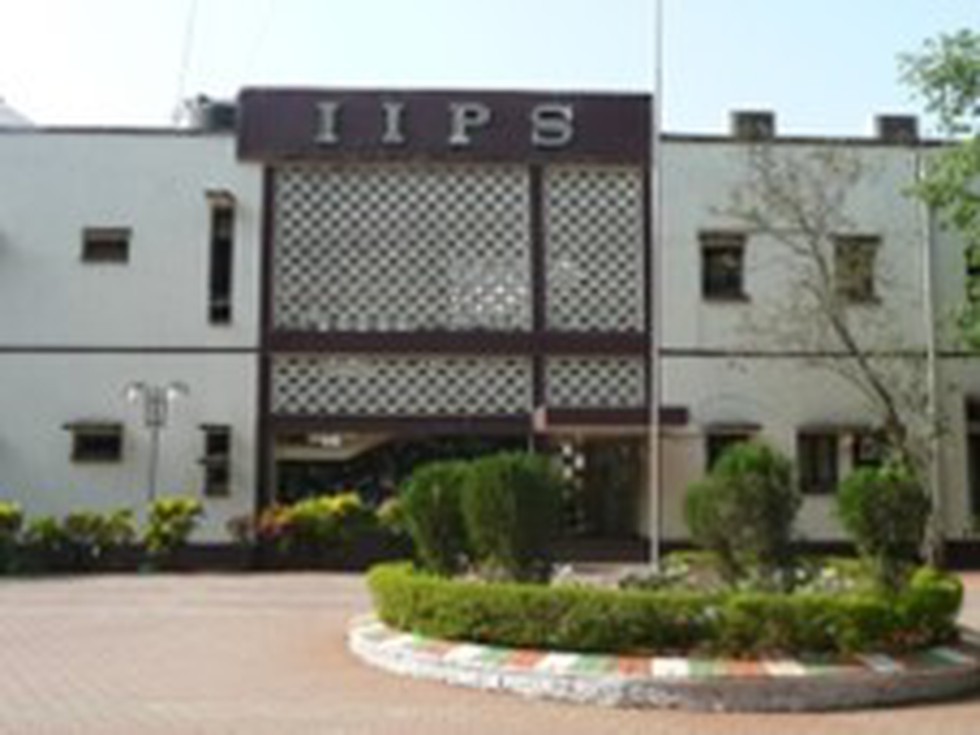
About International Institute for Population Sciences:
- It was formerly known as the Demographic Training and Research Centre (DTRC) till 1970.
- It was established in July 1956 under the joint sponsorship of Sir Dorabji Tata Trust, the Government of India and the United Nations.
- It serves as a regional centre for Training and Research in Population Studies for the ESCAP region.
- The Institute was re-designated to its present title in 1985 to facilitate the expansion of its academic activities.
- It was declared as a 'Deemed to be University' on August 14, 1985, under Section 3 of the UGC Act, 1956 by the Ministry of Human Resource Development, Government of India.
- The recognition has facilitated the award of recognized degrees by the Institute itself and paved the way for further expansion of the Institute as an academic institution.
- IIPS holds a unique position among all the regional population centres.
- It was the first such centre started, and it serves a much larger population than any of the other regional centres.
- The Institute is under the administrative control of the Ministry of Health and Family Welfare, Government of India.
- Institute had conducted many prime surveys like National Family Health Survey (NFHS), District Level Household Survey (DLHS), Assessment of National Rural Health Mission (NRHM), YOUTH in India Project etc.
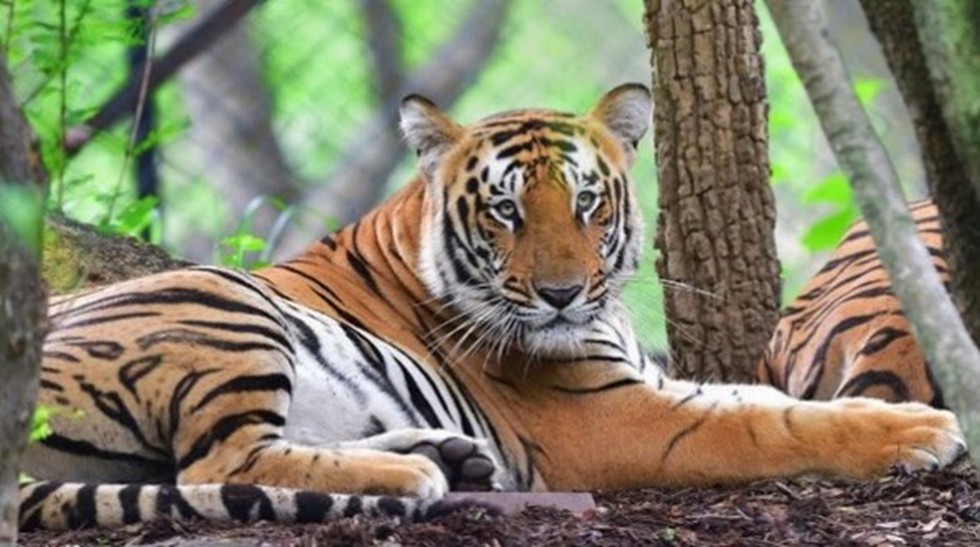
About Kawal Tiger Reserve:
- Location:
- It is located in North Eastern part of Telangana(Old Adilabad district), with the Godavari River on one side and the Maharashtra border on the other.
- It forms part of the Deccan peninsula-central highlands.
- Rivers: The reserve is the catchment for the rivers Godavari and Kadam, which flow towards the south of the sanctuary.
- Corridor: It has connectivity to the Tadoba-Andhari Tiger Reserve of Maharashtra in the North and to the Indravati tiger reserve of Chhattisgarh towards its North-Eastern side.
- Habitat: It has diverse habitats comprising of dense forests, grasslands, open areas, rivers, streams and water bodies.
- Vegetation: Southern Tropical Dry Deciduous Forest.
- Flora:
- Teak is found extensively along with Bamboo.
- As many as 673 plant species have been recorded, and the important ones are Anogeissus latifolia, Mitragyna parviflora, Terminalia crenulata, Terminalia arjuna, Boswellia serrata etc.
- Fauna:
- It has a faunal diversity which is typical of the Deccan Plateau.
- The major wild animals include: nilgai, chousinga, chinkara, black buck, sambar, spotted deer, wild dog, wolf, jackal, fox, tiger, leopard, and the jungle cat.
Key Facts about Amrabad Tiger Reserve:
- Location: It is located in the Nagarkurnool and Nalgonda districts in the southern part of Telangana.
- It was notified as a sanctuary in 1983, and after the State bifurcation, it was declared as Amarabad Tiger Reserve in 2015.
- ATR covers a part of the Nallamala Forest and is home to a variety of flora and fauna.
- The hilly terrain of this Tiger Reserve, with deep valleys and gorges, forms the catchment of the Krishna River.
- Flora:
- Dense grass occurs in 30% of the area and is scattered in an additional 20%.
- Dominant tree species include Terminalia tomentosa, Hardwickia binata, Madhuca latifolia. Diospyros melanoxylon, Gardenia latifolia etc.
- Fauna:
- Major wild animals found are Tiger, Leopard, Wild dog, Indian Wolf, Indian fox, Rusty-spotted cat, Small Indian civet, Sloth bear, Honeybadger, Wild boar etc.
- Over 303 bird species have been identified in this region. Some important groups include Eagles, Pigeons, Doves, Cuckoos, Woodpeckers, Drongos etc.
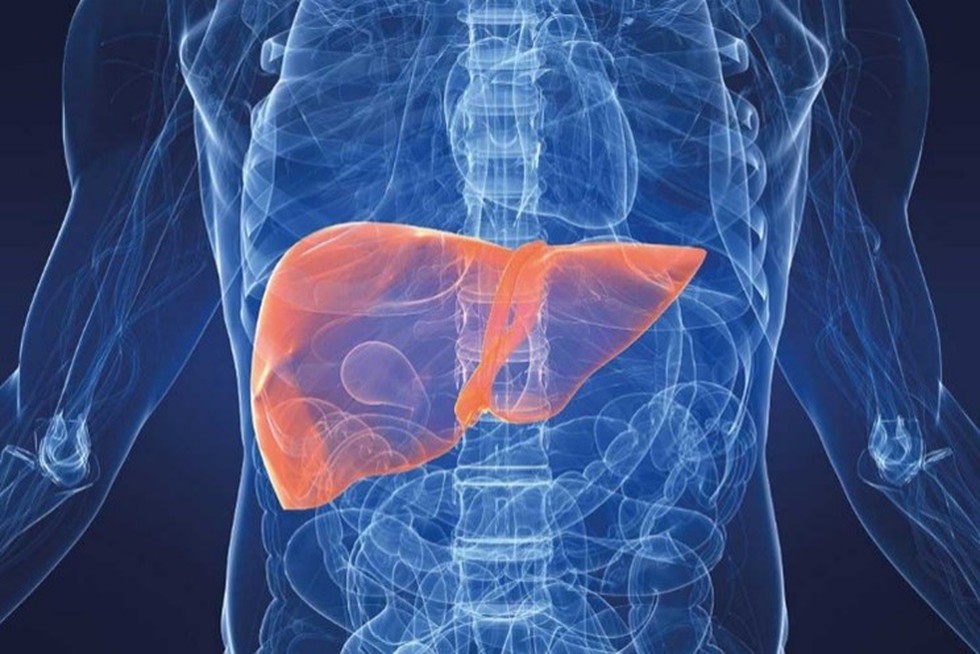
About World Hepatitis Day:
- It is observed each year on July 28 to raise awareness of viral hepatitis, which causes inflammation of the liver that leads to severe disease and liver cancer.
- It is recognized by the World Health Organization (WHO).
- The theme for World Hepatitis Day 2023 is "We're not waiting". This theme highlights the need for urgent action to eliminate viral hepatitis by 2030.
- Why July 28?
- July 28 is the birthday of Dr. Baruch Blumberg (1925–2011).
- Blumberg discovered the hepatitis B virus in 1967, and 2 years later, he developed the first hepatitis B vaccine.
- These achievements culminated in Dr. Blumberg winning the Nobel Prize in Physiology or Medicine in 1976.
What is Hepatitis?
- Hepatitis is inflammation of the liver.
- Inflammation is swelling that happens when tissues of the body are injured or infected.
- It can damage your liver. This swelling and damage can affect how well your liver functions.
- Hepatitis can be an acute (short-term) infection or a chronic (long-term) infection.
- What causes hepatitis? There are different types of hepatitis, with different causes:
- Viral hepatitis is the most common type. It is caused by one of several viruses -- hepatitis viruses A, B, C, D, and E.
- Alcoholic hepatitis is caused by heavy alcohol use.
- Toxic hepatitis can be caused by certain poisons, chemicals, medicines, or supplements.
- Autoimmune hepatitis is a chronic type in which your body's immune system attacks your liver. The cause is not known, but genetics and your environment may play a role.
- How is viral hepatitis spread?
- Hepatitis A and hepatitis E usually spread through contact with food or water that is contaminated with an infected person's You can also get hepatitis E by eating undercooked food.
- Hepatitis B, hepatitis C, and hepatitis D spread through contact with the blood of someone who has the disease.
- Hepatitis B and D may also spread through contact with other body fluids. This can happen in many ways, such as sharing drug needles or having unprotected sex.
- Symptoms: Some people with hepatitis do not have symptoms and do not know they are infected. Common symptoms include:
- Fever
- Fatigue
- Loss of appetite
- Nausea and/or vomiting
- Abdominal pain
- Dark urine
- Clay-coloured bowel movements
- Joint pain
- Jaundice, yellowing of your skin and eyes
- Treatment:
- Treatment for hepatitis depends on which type you have and whether it is acute or chronic.
- Acute viral hepatitis often goes away on its own.
- There are different medicines to treat the different chronic types of hepatitis.
- Possible other treatments may include surgery and other medical procedures.

About National Cooperative Consumers Federation of India (NCCF):
- It was established on 16th October 1965 to function as the apex body of consumer cooperatives in the country.
- It is an organization to promote consumer cooperative movement in the country, aspires to facilitate the voluntary formation and democratic functioning of cooperatives, based on self-reliance and mutual aid for overall economic betterment and financial autonomy.
- It is registered under the Multi-State Co-operative Societies Act, 2002.
- NCCF functions under the Ministry of Consumer Affairs, Food and Public Distribution, Government of India.
- Headquarters: New Delhi
- Structure:
- The management of NCCF vests in the Board of Directors.
- The ultimate authority of NCCF vests in the hands of the General Body.
- Board of Directors exercises all the powers of NCCF except those reserved for General Body.
- The current sanctioned strength of the Board of Directors is 21.
What is Open Network for Digital Commerce (ONDC)?
- It is an open-source network set up to enable buyers and sellers to transact with each other irrespective of the e-commerce platform on which either of them is registered.
- It will enable local commerce across segments, such as mobility, grocery, food order and delivery, hotel booking and travel, among others, to be discovered and engaged by any network-enabled application.
- It is an initiative of the Department for Promotion of Industry and Internal Trade (DPIIT) under the Ministry of Commerce and Industry.
- It comprises buyer-side apps where consumers can place orders, seller-side apps that onboard merchants and display their listings, and logistics platforms that handle deliveries.
- Benefits:
- It offers small retailers an opportunity to provide their services and goods to buyers across the country through an e-commerce system.
- ONDC enables merchants to save their data to build credit history and reach consumers.
- It is expected to digitise the entire value chain, promote the inclusion of suppliers, derive efficiencies in logistics and enhance value for consumers.
- ONDC protocols would standardize operations like cataloguing, inventory management, order management and order fulfilment.
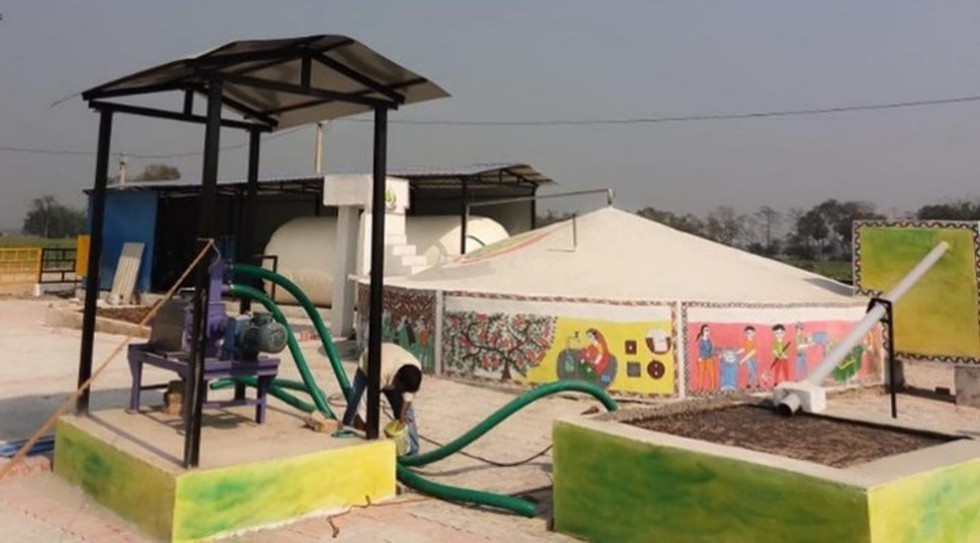
About Gobardhan portal:
- It serves as a centralized repository for assessing investment and participation in the Biogas/CBG (Compressed Biogas) sector at a pan-India level.
- Primary objective: To streamline the process of setting up CBG/Biogas plants in the country.
- It allows any government, cooperative or private entity operating or intending to set up a Biogas/CBG/Bio-CNG plant in India to obtain a registration number by enrolling in the portal.
- This registration number will enable them to avail a multitude of benefits and support from the Ministries and Departments of the Government of India.
Key Facts about GOBARdhan Scheme:
- Galvanizing Organic Bio-Agro Resources Dhan is a crucial umbrella initiative of the Government of India.
- The government launched the Gobardhan scheme in 2018 as a national priority project under the Swachh Bharat Mission Grameen-Phase II program.
- Aim:
- To generate wealth and energy by converting cattle dung, agricultural residue, and other organic waste into Biogas, CBG and bio-fertilizers.
- It adopts a whole-of-government approach and aims to convert waste into wealth, thereby promoting a circular economy.
- Nodal Ministry: The Department of Drinking Water and Sanitation, Ministry of Jal Shakti.
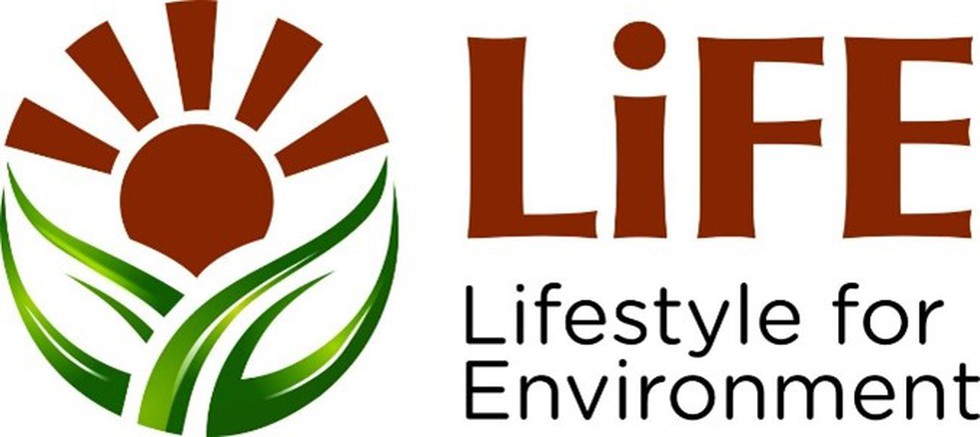
About LiFE Mission:
- Mission LiFE, or Lifestyle for Environment, is an India-led global mass movement to nudge individual and community action to protect and preserve the environment.
- It was launched by the Indian Prime Minister at the 26th UN Climate Change Conference of the Parties (COP26) in Glasgow in November 2021.
- The program hopes to “mobilize one billion Indians as well as people in other countries to become individuals who practice sustainable lifestyles.
- The global movement will showcase sustainable goals and climate actions taken by countries and individuals around the world.
- It makes the fight against climate change democratic, in which everyone can contribute with their respective capacities.
- It emboldens the spirit of the P3 model, i.e., Pro Planet People.
- It functions on the basic principles of ‘Lifestyle of the planet, for the planet and by the planet’.
- It aims at following a three-pronged strategy for changing people's collective approach towards sustainability,
- nudging individuals to practice simple yet effective environment-friendly actions in their daily lives (demand)
- enabling industries and markets to respond swiftly to the changing demand (supply)
- to influence government and industrial policy to support both sustainable consumption and production (policy).


.png)
.png)
.png)
























































































































































.png)
.png)
.png)
.png)
.png)


.png)
.png)
.png)





.png)
.png)






.png)
.png)
.png)
.png)
.png)
.png)
.png)
.png)
.png)

.png)







.png)
.png)


.png)
.png)
.png)


.png)

.png)
.png)





.jpg)

.png)
.png)


.png)

.png)
.png)
.png)

.jpg)

.jpg)


.png)

.png)
.png)
.png)
.png)
.png)
.png)
.png)




.png)

.png)





.png)
.png)
.png)
.png)
.png)
.png)
.png)
.png)
.png)
.png)
.jpg)
.jpg)

.png)
.png)
.png)
.png)
.png)
.png)
.png)
.png)
.png)
.png)
.png)
.png)
.png)
.png)
.png)
.png)
.png)
.png)
.png)
.png)
.png)
.png)



.png)
.png)

.jpg)
.jpg)


.jpg)
.jpg)
.jpg)
.jpg)
.jpg)

.jpg)








.jpg)
.jpg)
.jpg)
.jpg)
.jpg)

















.jpg)
.jpg)







.jpg)


















.jpg)
.jpg)






























































































.jpg)
.jpg)


























.jpg)

.jpg)










.jpg)








.jpg)




.jpg)










.jpg)


















.jpg)












































.jpg)














.jpg)
.jpg)
.jpg)





.jpg)

.jpg)
.jpg)





































































.jpg)


































.jpg)
.jpg)
















































.jpg)












.jpg)


.jpg)




.jpg)
.jpg)
.jpg)

.jpg)
.jpg)
.jpg)
.jpg)

.jpg)
.jpg)
.jpg)

.jpg)
.jpg)
.jpg)
.jpg)
.jpg)
.jpg)
.jpg)
.jpg)

.jpg)


.jpg)
.jpg)
.jpg)
.jpg)
.jpg)
.jpg)
.jpg)
.jpg)
.jpg)
.jpg)











.jpg)
.jpg)





.jpg)
.jpg)
.jpg)
























.jpg)
























.jpg)









.jpg)
.jpg)







.jpg)
.jpg)









































.jpg)
.jpg)
.jpg)
.jpg)
.jpg)

.jpg)
.jpg)
.jpg)
.jpg)
.jpg)


.jpg)
.jpg)
.jpg)
.jpg)
.jpg)

.jpg)
.jpg)
.jpg)
.jpg)
.jpg)
.jpg)
.jpg)
.jpg)
.jpg)
.jpg)
.png)

.png)
.png)

.png)
.png)
.png)
.png)


.jpg)
.jpg)

.jpg)
.jpg)
.jpg)

.png)
.png)
.png)
.png)
.png)
.png)
.png)

.png)
.png)
.png)
.png)
.png)
.png)
.png)
.png)
.png)
.png)





































































-min.png)



.png)




.png)








































